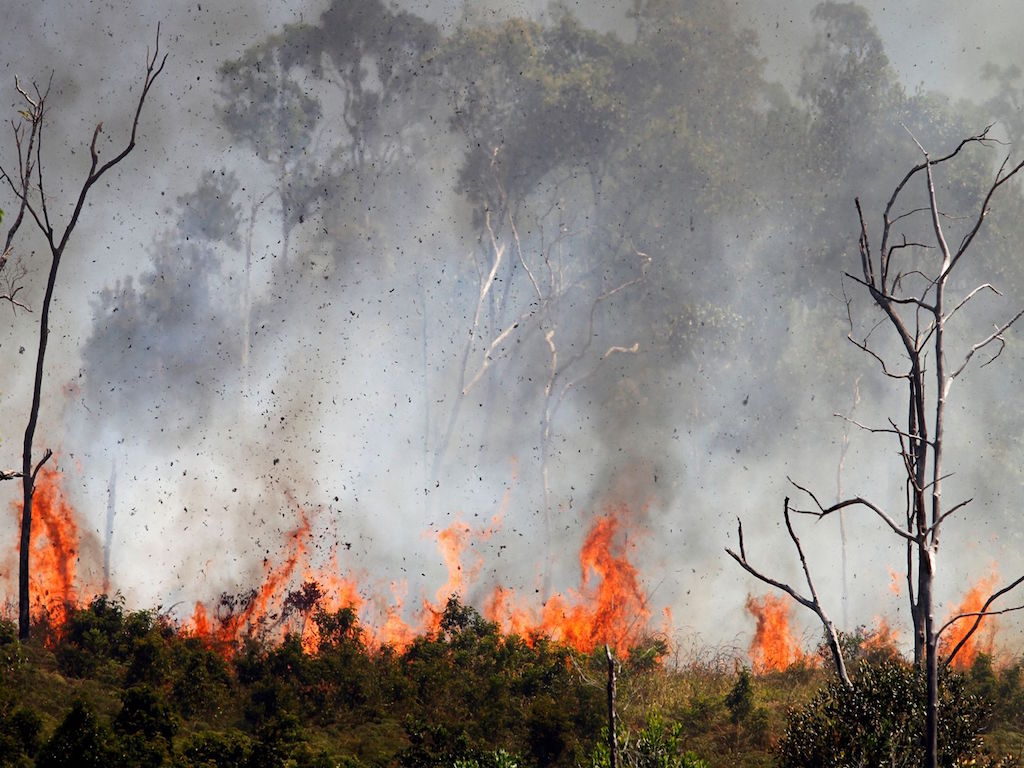3 Mins Read
Land and forest fires have blanketed Indonesian forests for months on end, and the World Bank predicts in a new analysis that it will cost the country at least US$5.2 billion in economic losses and damage this year. Half of the predicted economic losses came from agriculture and environmental sectors, as the fires released massive amounts of greenhouse gases into the atmosphere. Without taking into account the impacts of the fires on public health, the likely actual figure of economic losses for Indonesia could be much higher.
In a new report conducted by the World Bank, the land and forest fires that have engulfed Indonesia for months will cost the country at minimum US$5.2 billion in damage and economic losses this year. The figure takes into account the fires ’direct damage to assets and indirect impacts on agriculture, transportation, trade, industry and environmental sectors. Analysts calculated that over half of the cost will come from agriculture and environmental sectors, as the fires released over 708 million tonnes of carbon dioxide equivalent of greenhouse gases into the atmosphere and damaged swathes of estates and perennial crops.
Due to the fires, the “economic growth in 2019 and 2020 is predicted to be lower by 0.09 and 0.05 percentage points respectively,” outlined the report.
We have been following the Indonesian fires closely over the past few months. In August, while the Amazon fires caught major headlines, we reported on the land and forest fires aflame in Indonesia and Southeast Asia more broadly. The fires burn annually across Indonesia’s vast peat swamp zones, which get drained and dried for planting crops such as palm fruit to meet global demand for the lucrative oil, a common ingredient across almost every product category, from processed junk food to hair conditioner. This year’s fires burned across over 10,000 square kilometres of land as of October, according to the country’s environment ministry, blanketing the entire Southeast Asian region in toxic haze in the past few months.
The Indonesian authorities have made some moves to contain the fires, sealing off 30 plantation companies and deploying over 9,000 firefighters to deter the spread of the fires and dropping almost 240 million litres of water as a part of their efforts. However, it is clear that enormous damage has already been done, and the World Bank’s estimates does not yet calculate the high costs to human health as air quality continues to deteriorate. As of September 2019, over 900,000 people have already reported respiratory diseases and hundreds of schools have had to close temporarily in Indonesia and neighbouring Singapore and Malaysia too.
According to an August study published in GeoHealth, the pollution from the fires will cause 36,000 premature deaths annually across Indonesia, Singapore and Malaysia over the next decades if current trends continue and the government fails to initiate more measures such as better land management, peatland restoration and clamping down on companies that source from suppliers that engage in forest and land burning practices.
Commenting on the potential long-term losses that Indonesia and the wider Southeast Asian region will have to bear as a result of the fires, environmental NGO Madani’s executive director Teguh Surya said: “This year’s fires might be over now as rain starts to fall, but the disaster doesn’t end. There are long lasting impacts that could last for years…but have to be calculated for the next 20 years.”
Lead image courtesy of The Nature Conservancy.




